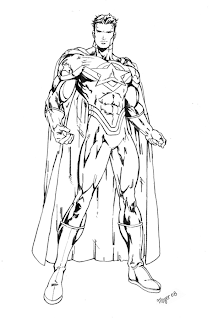 the bit where I hear lots of crickets chirping. Ok…
the bit where I hear lots of crickets chirping. Ok…What is it that you know about ‘gypsies’? Fortune tellers? Thieves and vagrants? Belly dancers and covered wagons?
Spoilers! The groups are one in the same with one tiny detail. The term gypsy is an inappropriately placed, now even derogatory nickname for these nomadic people.
This is by far the most serious/political subject I believe holds my interest due to the fact that it gets so little attention. I plan to periodically talk about this subject since there are many facets to cover, but to start with, I’m going to put the Romani history in a nutshell.
 First of all, the term “gypsy” comes from a term loosely tying to “Egyptian.” In retrospect I see that in the common ‘gyp’…dunno why I never noticed that the first time I researched this, years ago. Anyway…the reason for the assumption of Egyptian origins comes from the fact that this was a nomadic group of dark haired/skinned people with strange ways that spoke a foreign language.
First of all, the term “gypsy” comes from a term loosely tying to “Egyptian.” In retrospect I see that in the common ‘gyp’…dunno why I never noticed that the first time I researched this, years ago. Anyway…the reason for the assumption of Egyptian origins comes from the fact that this was a nomadic group of dark haired/skinned people with strange ways that spoke a foreign language.The problem with this misunderstanding stood with the fact that these nomads remained separate from the whole of society. Later, it turns out that their real origins were that of Indian heritage, with a language that was still heavily based on Sanskrit.
The issue with these people remaining separate from society was that they continued on a path of being unaccepted by the majority. Though there were moments of intrigue when it came to the exotic people, the fascination always took a backseat to prejudice.
Another detail I should mention is about the different groups and how they work/mingle with the rest of society. First of all, the Roma are just one group of many, other examples being the Yenish and the Sinti. They range all over Europe, actually making up the largest minority in many countries.
 Each group has been through its own issues in the past, and in fact still face them today. The first example I have for you is the forced assimilation of the Swiss Yenish. Yenish children at one time were taken from their families and placed in orphanages in an attempt to rid themselves of the vagrant minority. When old enough to leave the orphanages, they were placed in prison or mental institutions for the remainder of their lives, criminalized.
Each group has been through its own issues in the past, and in fact still face them today. The first example I have for you is the forced assimilation of the Swiss Yenish. Yenish children at one time were taken from their families and placed in orphanages in an attempt to rid themselves of the vagrant minority. When old enough to leave the orphanages, they were placed in prison or mental institutions for the remainder of their lives, criminalized. Yet another example is the holocaust. Along with many Jews, the nomadic populations were subjected to genocide as well. Over half a million died. These people have been going through obstacles such as this throughout history, and it is no different today.
Yet another example is the holocaust. Along with many Jews, the nomadic populations were subjected to genocide as well. Over half a million died. These people have been going through obstacles such as this throughout history, and it is no different today. There are camps in Italy to keep Roma contained, there are politicians attempting to have all “gypsies” fingerprinted, and it is nearly impossible for them to find work with all the discrimination. This is where the controversy comes in.
There are camps in Italy to keep Roma contained, there are politicians attempting to have all “gypsies” fingerprinted, and it is nearly impossible for them to find work with all the discrimination. This is where the controversy comes in.People had problems with them to begin with, thus drawing a very defined line between the Romani and the rest of society. Then it became easier to live by other, less looked-well-upon means. Then the majority persecutes them for being criminals. This in my opinion is one of those…people are what you make them…scenarios.

This has been a short intro to the Romani, and the basic how things work section. There will be others. In future posts I will be focusing on specific events that have affected the Roma and other groups.


























